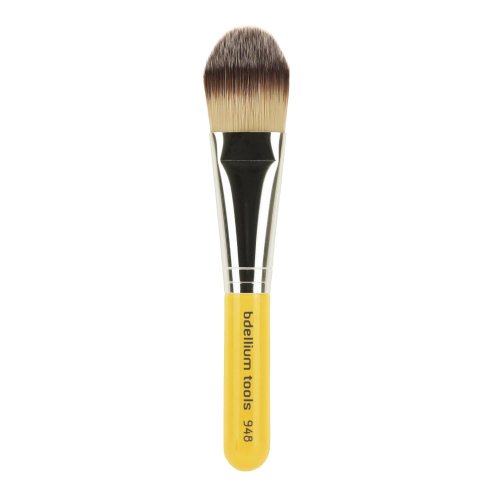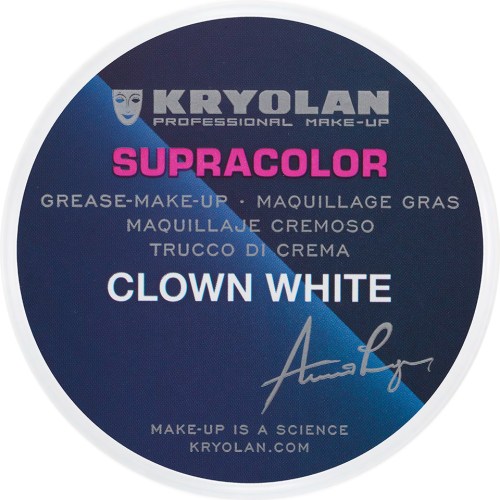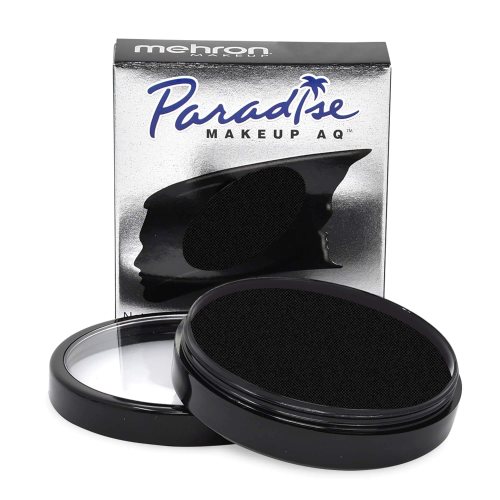Our editors independently select these products. Making a purchase through our links may earn Well+Good a commission
I Got My Makeup Done Like a Catrina for Día de Muertos in Mexico, and It Brought Me Closer to My Deceased Relatives
I celebrated Día de Muertos, or Day of the Dead, with traditional catrina makeup, and it strengthened my connection to lost loved ones.
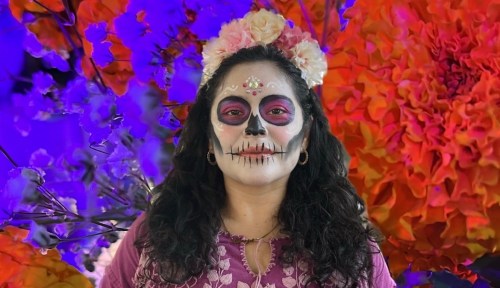
In Mexico, the first two days of November are observed as Dia de Muertos—The Day of the Dead. The national holiday is thought of as a portal for our deceased relatives to rejoin us in the living world. Traditionally, we create altares (altars) and embellish them with marigold flowers along with our family member’s favorite food or drink, which we collectively call ofrendas (offerings).
Hardcore Día de Muertos observers will also don Catrina makeup, which is skeletal makeup that honors the connection between life and death. This year, for the first time ever, I put on a full Catrina face—and it made me feel closer to my loved ones who have passed.
My parents are both Mexican immigrants. In an effort to assimilate, which made life less difficult for them in the States, they shed traditions like Dia de Muertos. This meant that growing up, we didn’t have altares or ofrendas in our home.
As an adult, I struggled to find ways to connect to loved ones who had passed on. It made me sad to think about the fact that their physical presence had ceased to exist. When I realized that Dia de Muertos is a chance to honor their spiritual essence, I felt compelled to try the Catrina look. And boy am I glad I did.
How the Mexican Catrina came to symbolize Día de Muertos
According to Guillermina Ibarra Cedeño—a tour guide born and raised in Puerto Vallarta, Mexico, where the holiday is widely celebrated (and where I spent this year’s event, hosted by the Marriott Puerto Vallarta)—the Day of the Dead dates back to pre-Hispanic times. However, the Catrina is a more recent addition to the festivities.
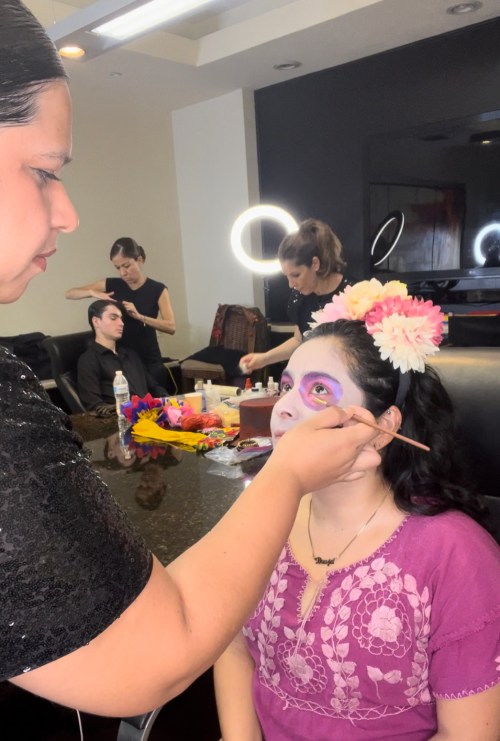
“Our ancestors didn’t use skulls or paint themselves. That happened around the 1920s,” says Ibarra Cedeño. “People started doing that because of José Guadalupe Posada. He painted a famous murall that shows the Catrina as a skeleton. Now, the Catrina is very iconic and is connected to Day of the Dead.”
Donning Catrina makeup helped me honor and connect to my deceased loved ones
The first time I saw my Catrina face, I had to hold back tears. As artist Fabiola Fernandez applied my makeup, I felt as though I could feel my ancestors in the room with me.
Last year, my mother’s brother—Joel Arroyo Barreto, who was also my godfather—died unexpectedly. Candidly, it was one of the hardest losses that I’ve ever been dealt. He was the proudest Mexican I have ever known, and the biggest reason I even wanted to do my Catrina makeup in the first place.
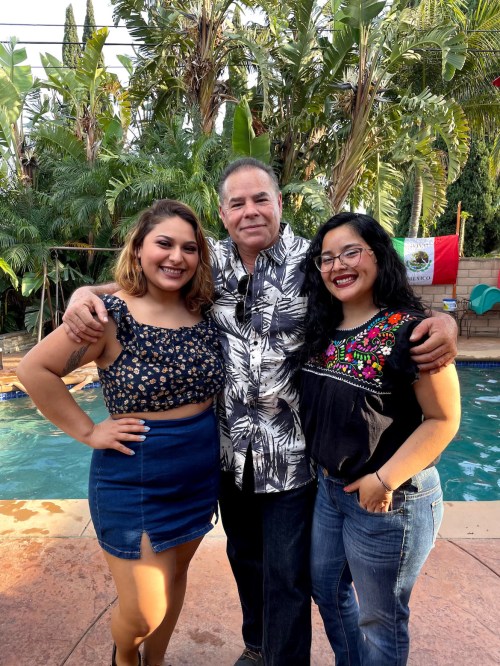
As Fernandez painted my face white, I all but heard my padrino (Spanish for godfather) speaking to me. Obviously, he was not physically in the room with me, but I truly feel like I channeled a message from him. “Hechale ganas,” he told me, encouraging me to keep working hard.
“When you feel the wind during day of the dead, that’s the presence of your loved ones,” says Ibarra Cedeño. “Think about when someone walks by you. You can feel the whoosh of air. That’s what happens when our family members visit us.” And the wind was blowing on November 2nd.
While I walked around the Puerto Vallarta cemetery in my Catrina get-up, my grandmothers—Guadalupe Camacho León (aka Lupita) and Vicenta Arroyo Barreto (aka Chenta)—paid me a visit, too.
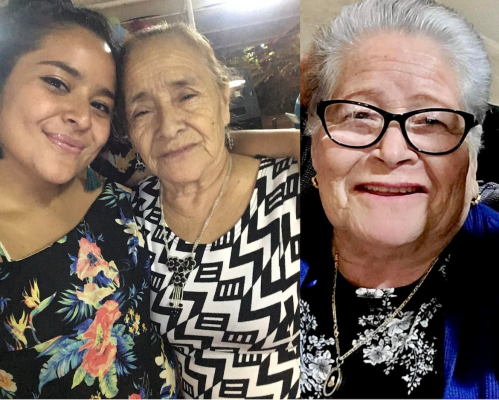
The former, who’s my paternal grandma, told me how pretty I looked. She also mentioned how proud she was of me for embracing my roots and never forgetting where I come from. My maternal grandmother was never a woman of many words, at least not with me. But that day, I could see her in my mind’s eye—smiling at me from a distance.
I may not have grown up observing Día de Muertos, but I know for a fact that I’ll continue celebrating it until it’s my time to go. It replaces the sadness of loss with a chance to feel the presence of a loved one, and for that, I am grateful.

Shop the products Fernandez used to create my Catrina look
Mario Badescu, Facial Spray with Aloe, Cucumber, Green Tea — $7.00
“I’m using this so that your face is hydrated but not oily,” Fernandez told me as she spritzed my face. She added that an oily face would lead the paint to easily smear, so this step helps the makeup stay in place.
Bdelium, Tools Studio 948 Foundation — $18.00
This was the brush that Fernandez used to spread the white paint all over my face. She likes it because it covers a lot of surface area at once. “It saves me a lot of time when I’m doing the catrina makeup,” she says.
Kryolan, Supracolor Clown White — $7.50
According to Fernandez, this is a brand that’s used a lot for special effects and in theatre productions, which means it has solid coverage and staying power.
Mehron, Makeup Colorset Powder — $13.00
After she painted my face, Fernandez used this powder in white to set the look.
Mehron, Paradise Makeup AQ Face and Body Makeup — $14.00
This is what Fernandez used to outline my eyes and to draw the smile lines around my lips. It goes on really smoothly and lasts for hours.
Juvia’s Place, The Masquerade Mini Eyeshadow Palette — $27.00
Fernandez says that this palette is one of her favorites because of how pigmented the shadows are.
Sign up for the Well+Good SHOP Newsletter
Get exclusive deals on wellness, beauty, fitness, and food products that have been hand-picked by our editors.
Got it, you've been added to our email list.




